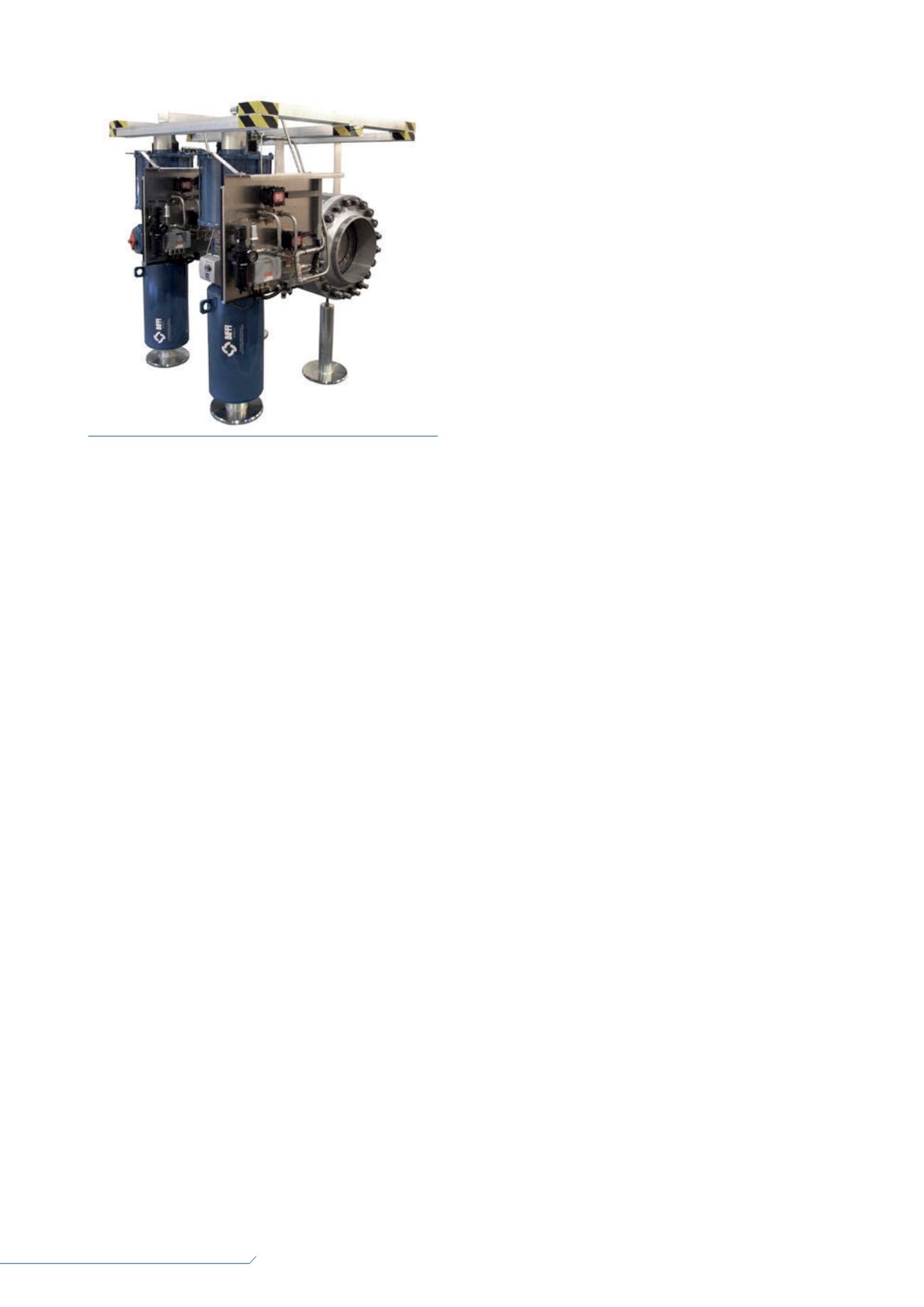
58
LNG
INDUSTRY
SEPTEMBER
2016
land-based facilities, which are often located in areas of
environmental interest, or far away from existing
infrastructure. This new technology can present unique
technical demands, while storing and handling LNG is
challenging for plant engineers in relation to infrastructure.
Cooled to and stored at -162°C, LNG requires specially
designed and engineered equipment to perform safely
under demanding conditions, which, combined with the
substantial energy potential and flammability of the gas,
generates significant potential for hazardous events. These
factors have led to an industry-wide focus on safety and
standards.
The need for safety
There are many aspects to plant safety. Installations need
to be robust and well-maintained not only to maximise
uptime and process efficiency, but also to ensure
safe and reliable operations. While numerous safety
devices are required for both land-based and offshore
liquefaction, one of the most critical areas is valve design
and application. Regardless of the type of LNG facility,
reliable and high performance safety instrumented systems
(SISs), control systems and safety valves are designed
to continually monitor the status of the processes. They
react instantaneously to any mechanical, electrical or
operational failure, which may lead to a critical process
upset or overpressure event, resulting in the release of
flammable and toxic process media. This safeguards plant
personnel, plant assets and the surrounding communities
and environment from damage.
Valve solutions
Pilot operated pressure relief devices
Mandatory by international code for the protection of
pressure vessels and pipelines, pressure relief valves (PRVs)
are the last line of defence when it comes to plant safety.
Selection of the correct PRV type ensures that the valve can
operate under extreme operating temperatures to provide
optimum safety in the LNG process. It also minimises
environmental impact from seat leakage. As the final device
designed to prevent failure during overpressure conditions,
PRVs must offer complete reliability that they will open at a
predetermined set pressure, allow a specific capacity flow
within the allowable overpressure limit, and close once
normal conditions have been restored. The design of these
valves must withstand corrosive process media, enable
critical protection against overpressure and avoid the risk of
explosion.
PRV manufacturing has evolved over the years to adapt
to the changing requirements of LNG applications.
Considerations such as flow capacity, footprint, durability,
and opening and closing performance must be taken into
account, all the while being able to tolerate increasing
operational and output demands. Pilot operated PRVs on
LNG carriers and land-based LNG storage tanks are vital to
process safety due to their compliance with high seat
tightness standards (zero leakage as per API RP 527). This
improves further as the operating pressure reaches its set
pressure point. The full opening capability of PRVs and the
large surface area of the pilot diaphragm ensure
instantaneous and accurate pressure relief. Further
advantages, such as high flow capacity, optimised flow/size
ratio and minimised maintenance requirements, deliver
additional key benefits to engineers.
Safety instrumented systems
Designed to protect personnel, equipment and the
environment by mitigating the likelihood and severity
of potential risks, SISs also constitute a critical factor in
LNG applications. Comprising sensors, a logic solver and
emergency shutdown valves (ESDVs), the SIS serves
to take the process to a safe state when predetermined
safety configurations are violated. Emergency shutdown
(ESD) systems and high integrity pressure protection
systems (HIPPSs) are two subsystems of SISs, with the
former providing safe and reliable shutdown of a process
and HIPPS designed to prevent overpressurisation. Each
consists of an automated ESDV package, known as the final
control element due to its role as the ‘last line of defence’
in the event of an emergency situation. This component
is required to fail close or open in response to potentially
hazardous process conditions and is in direct contact with
the process media, so is considered the weakest link in the
system. It also contributes more than 50% of the calculated
risk reduction factor (RRF). Selection and design of the
ESDV, therefore, require special attention to ensure that it is
suited to the operational requirements of the ESD system.
A critical factor to take into consideration is compliance
with safety standards. Each component of the SIS must
meet the safety integrity level (SIL) required to satisfy plant
safety requirement specifications. Operating companies can
substantially increase their SIL loop rating if they adopt a
rigorous testing and maintenance programme on their
safety valves. By combining partial stroke testing (PST) of
valves with more frequent inspection, companies can
achieve a higher SIL rating without incurring the costs
associated with additional hardware.
An important step to ensure that an ESDV will perform
as intended when needed, PST has long been used to
deliver numerous advantages in addition to an improved
Figure 1.
Pentair Valves & Controls’ safety instrumented
system (SIS) package.


